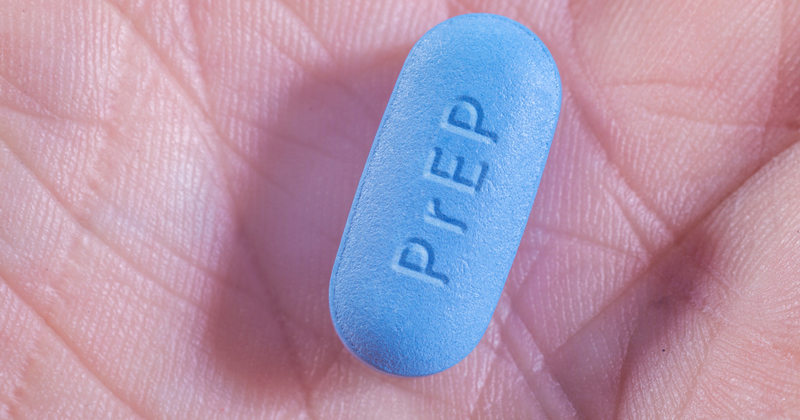No need to be worried or embarrassed
Sexual health can be a sensitive subject to discuss. But when you visit your GP, you shouldn’t be worried or embarrassed. We want to help, and we want to ensure you get the right treatment and the right advice. Consultations are non-judgmental and completely confidential.
Sexual health screening is usually quick and hassle-free. It can include blood, urine and swab tests. There are range of conditions that doctors test for when patients come in with symptoms, or wish to have a screening for Sexually Transmitted Infections (STIs).
Symptoms of Chlamydia
Women: vaginal discharge, pain on passing urine, pelvis pain
Men: penile discharge, pain on passing urine, testicular swelling / pain
Chlamydia is the most common sexually transmitted infection in the UK.
In most patients the infection is asymptomatic – meaning that an infection is present but doesn’t cause any symptoms. This can potentially cause complications in the long term (see below) and there is a risk of passing on the infection without knowing.
In asymptomatic patients the only way on knowing you have the disease is by getting tested.
You are more at risk of getting chlamydia if you don’t use barrier contraception (condoms), have a new partner or multiple partners. If Chlamydia is untreated it can potentially lead to pelvic infections and infertility in females, and testicular infections in males.
The treatment is straight-forward with antibiotics – the most common options being a single dose or a one week course.
We would generally advise testing after treatment to ensure the infection has cleared. In addition, it is important to refrain from intercourse until a week after treatment if you receive the single dose, or for the duration of antibiotic treatment. Patients testing positive for chlamydia should also be screened for other sexually transmitted infections as they can often co-exist.
Tests can be carried out by taking a swab sample or a urine test.
Symptoms of Gonorrhoea
Men: The infection is men is usually symptomatic, causing penile discharge and pain when passing urine.
Women: Approximately half of women patients with the infection do not have symptoms. However, when symptoms do show themselves, they can include pelvic pain, vaginal discharge, pain on passing urine and heavy periods / bleeding between periods.
Gonorrhoea accounts for a significant number of sexually transmitted infections every year. Risk factors include having a new sexual partner or multiple partners, not using barrier contraception (condoms), anal intercourse and oral sex.
In addition to affecting the genital tract, gonorrhoea can affect the rectal and oropharyngeal tract.
The treatment is most effective with a single dose of an antibiotic injection in combination with an oral antibiotic. All patients should have a repeat test after treatment to ensure clearance. Untreated gonorrhoea may lead to complications such as testicular infection and prostatitis in men. In females it may cause pelvic inflammatory disease, chronic pelvic pain and infertility.
Testing for gonorrhoea may be done by either a swab or urine sample. Any patient testing positive should also be screened for other sexually transmitted infections as they can often co-exist. We can offer high quality accurate testing with same day results.

Symptoms of Mycoplasma Genitalium
Mycoplasma Genitalium is a bacteria which can be sexually transmitted and cause symptoms in both males and females. Symptoms can be similar to other sexually transmitted infections, so testing specifically for mycoplasma is the only way to confirm infection.
Men: In men, symptoms include penile discharge and pain / stinging when passing urine.
Women: Women are often asymptomatic, in those that do have symptoms, these will include vaginal discharge, pain on passing urine, pelvic pain, bleeding in between periods or after intercourse.
If left untreated it can cause pelvic inflammatory disease and infertility in females and testicular / epididymis infections in males. Treatment is usually with a course of antibiotics and retesting after treatment is recommended to ensure cure.
Testing for mycoplasma genitalium can be done by a swab or urine test. Any patient testing positive should also be screened for other sexually transmitted infections as they can often co-exist.
Symptoms of Trichomonas Vaginalis
Men: In male patients many cases can be picked up incidentally and there may be no symptoms. However, it may present in some males with penile discharge and pain on passing urine.
Women: The symptoms include vaginal discharge, genital itching, pain on passing urine and lower abdominal pain.
Trichomonas Vaginalis is a protozoan infection and one of the most common sexually transmitted infections worldwide.
Treatment is usually with an antibiotic called metronidazole – which can be given as a single high dose treatment or over the course of 1 week.
Testing for trichomonas is usually performed by doing a urine test. Any patient testing positive should also be screened for other sexually transmitted infections as they can often co-exist. We offer high quality accurate testing with results available within 48 hours.
Symptoms of Herpes
The family of herpes viruses can cause a range of different conditions including chicken pox, shingles, cold sores and genital herpes simplex.
The herpes simplex virus type 2 (HSV2) is most commonly responsible for genital herpes infection, HSV1 can also cause genital infection but is more commonly associated with oral infections.
Men: Symptoms include a painful eruption of sores or blisters in the infected area (penis or the anus, mouth or wherever the virus has entered). There can be pain on passing urine and penile discharge. There may be flu like symptoms as well.
Women: Symptoms are similar to men, with the sores and blisters erupting around the vagina/ mouth or other areas of the body that have come into contact with the herpes infection.
The Herpes virus stays latent in the body and can be reactivated to cause subsequent infection with similar lesions which can take up to 10 days to resolve.
The family of herpes viruses can cause a range of different conditions including chicken pox, shingles, cold sores and genital herpes simplex.
The herpes simplex virus type 2 (HSV2) is most commonly responsible for genital herpes infection, HSV1 can also cause genital infection but is more commonly associated with oral infections.
There has been an increase in the prevalence of genital herpes especially in the men who have sex with men group. The infection can be passed on when having intercourse with a partner who has active symptoms and also in those that have had previous infection but are currently asymptomatic. Furthermore, a person with herpes may not have ever had any symptoms and can pass this on without knowing. Multiple partners and intercourse without condoms are also risk factors.
Treatment is with antivirals – if initiated early enough can cause a reduction in the severity of symptoms and reduce duration. In individuals having frequent attacks a long term daily course of low dose antivirals may be recommended to reduce the chance of an episode.
Testing can be via a urine test or a swab taken from any suspicious lesions in symptomatic patients. In those without symptoms a blood test can be taken to confirm infection – this is recommended for those patients who feel they may have been exposed to the herpes simplex virus. Results can be available withing 2 – 4 days depending on the test.
Any patient testing positive should also be screened for other sexually transmitted infections as they can often co-exist.

Symptoms of HIV
Men and women: Patients that contract HIV can sometimes present with a seroconversion illness - this is a flu-like illness which can present up to 6 weeks after exposure. In some patients, the only symptom may be a generalised and persistent increase in the size of glands (lymph nodes). However, in many patients there may be no symptoms for many years.
HIV is a retrovirus that can be spread through sexual intercourse, with the risk being higher in those not using condoms, having multiple partners and certain sexual practices such as anal intercourse.
The virus attacks and weakens the immune system (CD4 T cells) which eventually leads to AIDS where the body is susceptible to infections that would not normally cause an issue in a healthy individual.
Developing AIDS is not inevitable - the advances in HIV treatment mean that if diagnosed and treated early enough the life expectancy is similar to that of an individual without HIV. This has been a huge advancement in recent years and emphasises the importance of early testing.
Testing for HIV can be done as early as 10 days after exposure by looking for the genetic code of the virus itself (HIV RNA), or after 28 days by testing for HIV antibodies (the immune system response after HIV infection) and a specific HIV protein (p24 antigen).
A post exposure prophylaxis (PEP) can be offered to patients that have had high risk exposure - this involves taking anti-HIV medication for 28 days (consisting of 3 active drugs) and reduces the chance of developing HIV. It must be taken within 72 hours of high risk exposure (the earlier the better) for it to be effective. The medication does have side effects which can result in patient's not completing the course.
Pre-exposure prophylaxis (PrEP) is an option for HIV negative patients that are at high-risk of contracting HIV (e.g for individuals whose partner is HIV positive, men who have sex with men). This involves taking an anti-HIV medication (Truvada) on a daily basis or a short regime during the time of intercourse. Studies have shown PrEP greatly reduces the transmission of HIV.









